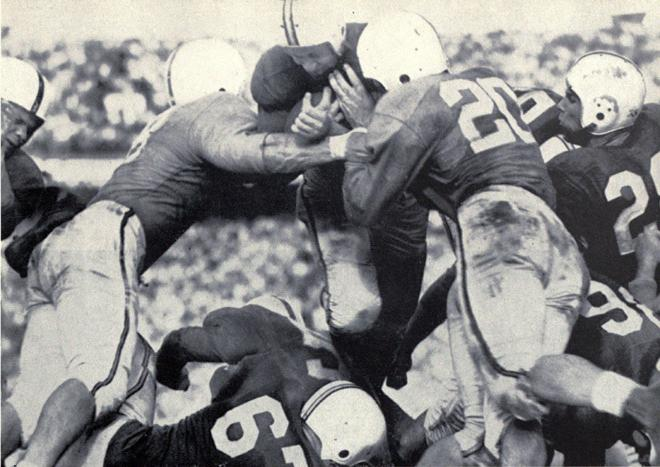


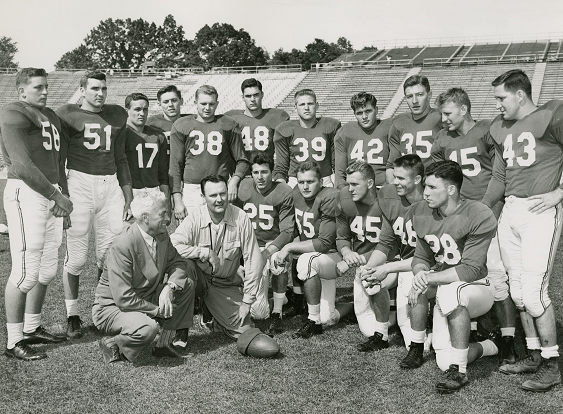
| at Washington & Lee (6-4) | 54-14 | |
| George Washington (2-6-1) | 33-6 | |
| at Georgia (5-5) | 43-7 | |
| North Carolina (2-8) | 14-7 | |
| at Louisiana State (7-3-1) | 27-0 | |
| Missouri (2-8) | 35-0 | |
| (Baltimore) Navy (2-6-1) | 40-21 | |
| North Carolina State (3-7) | 53-0 | |
| West Virginia (5-5) | 54-7 | |
| Sugar Bowl Tennessee (10-1) | 28-13 | #2 |
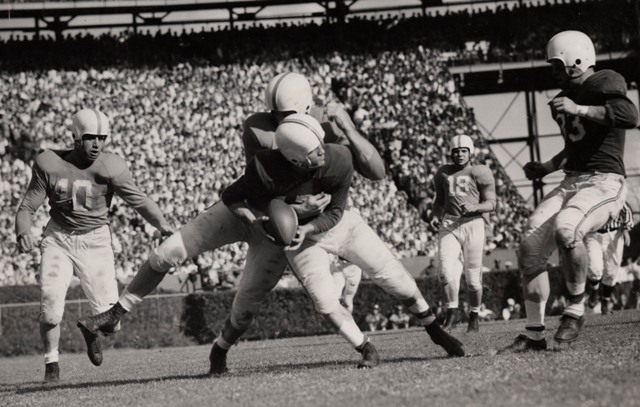
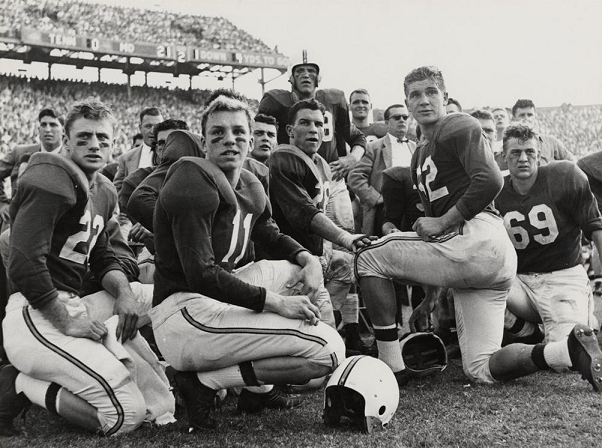
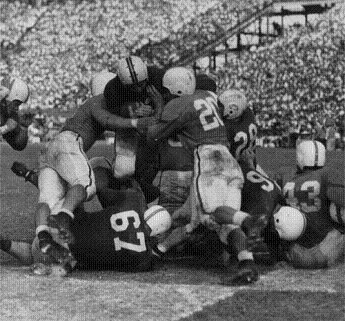
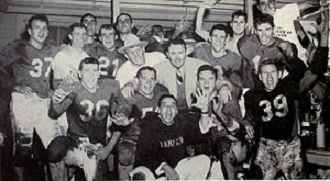
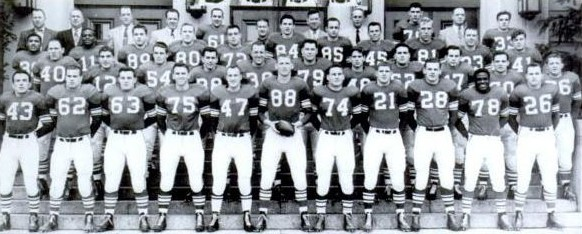
| Oregon State (4-6) | 6-0 | |
| at Michigan (4-5) | 25-0 | |
| at Ohio State (4-3-2) | 24-20 | #21 |
| Marquette (4-6-1) | 20-14 | |
| at Penn State (5-4) | 32-21 | |
| Pittsburgh (3-7) | 53-26 | |
| Notre Dame (7-2-1) | 35-0 | #19 |
| at Indiana (2-7) | 30-26 | |
| Colorado (7-3) | 45-7 | #23 |
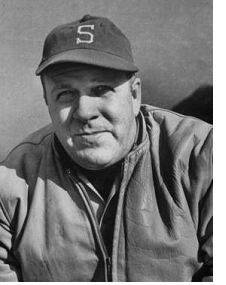 Michigan
State was coached by Clarence "Biggie" Munn (pictured at left), a Minnesota grad who took
Michigan State from nowhere to the top of the college football world
rather quickly. Prior to Munn, Michigan State's football history was
rather thin, though not so thin as Maryland's. MSU had fielded top 25
caliber teams 1908-1914, and they had even produced a strong MNC
candidate in 1913, but between 1914 and
Munn's hiring in 1947, MSU fielded just one top 25 caliber team, with a
7-1 finish in 1932. They also went 8-1 in 1934, but that team beat no
one of value, struggled to get by weak opponents, and lost to the only
good team they played (6-2 Syracuse).
Michigan
State was coached by Clarence "Biggie" Munn (pictured at left), a Minnesota grad who took
Michigan State from nowhere to the top of the college football world
rather quickly. Prior to Munn, Michigan State's football history was
rather thin, though not so thin as Maryland's. MSU had fielded top 25
caliber teams 1908-1914, and they had even produced a strong MNC
candidate in 1913, but between 1914 and
Munn's hiring in 1947, MSU fielded just one top 25 caliber team, with a
7-1 finish in 1932. They also went 8-1 in 1934, but that team beat no
one of value, struggled to get by weak opponents, and lost to the only
good team they played (6-2 Syracuse).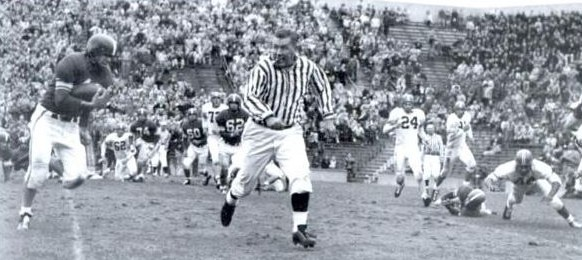
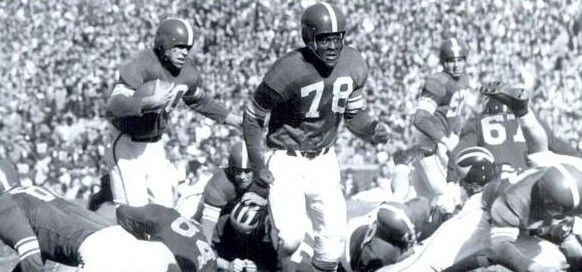
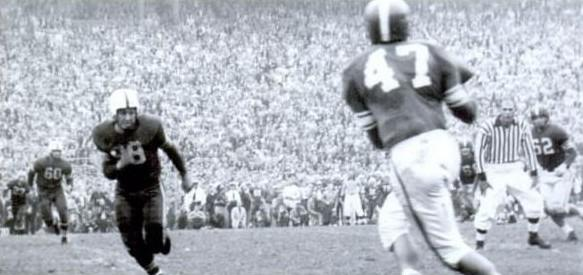
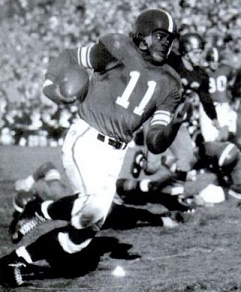
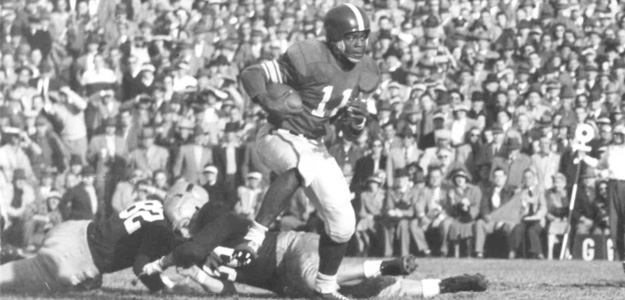
| Maryland 10-0 | Michigan State 9-0 | ||||||||||||||||||||||||||
|---|---|---|---|---|---|---|---|---|---|---|---|---|---|---|---|---|---|---|---|---|---|---|---|---|---|---|---|
|
|
||||||||||||||||||||||||||
| 1) DeVold
(math system) |
4.94 |
| 2)
College
Football Researchers Association |
4.90 |
| 3) National Championship Foundation | 4.78 |
| 4) Billingsley (math) | 4.68 |
| 5) Houlgate (math) | 4.53 |
| 6) Dunkel (math) | 4.45 |
| 7) Poling
(math) |
4.43 |
| 8) Boand (math) | 4.38 |
| 9) Sagarin-ELO (math) | 4.331 |
| 10) AP Poll | 4.325 |
| 11) Litkenhous
(math) Sagarin (math) |
4.11 |
| 13) Helms Foundation | 3.87 |
| 14) Berryman (math) | 3.68 |
| 15) Williamson (math) | 3.34 |
| 1) Boand (math system) | 4.26 |
| 2) College Football Researchers Association | 4.22 |
| 3) Poling (math) | 4.11 |
| 4) Helms | 4.09 |
| 5) Sagarin-ELO (math) | 4.06 |
| 6) National Championship Foundation | 3.96 |
| 7) Dickinson (math) | 3.49 |
| 8) Houlgate (math) | 3.35 |
| 9) Billingsley (math) | 3.34 |
| 10) Sagarin (math) | 3.28 |
| 11) Parke Davis | 2.77 |
| 1) Houlgate (math system) | 4.5 |
| 2) Helms | 4.3 |
| 3) Parke Davis | 4.2 |
| 4) National Championship Foundation | 3.7 |
| 5) Billingsley (math) | 3.6 |